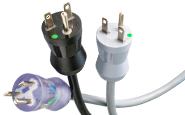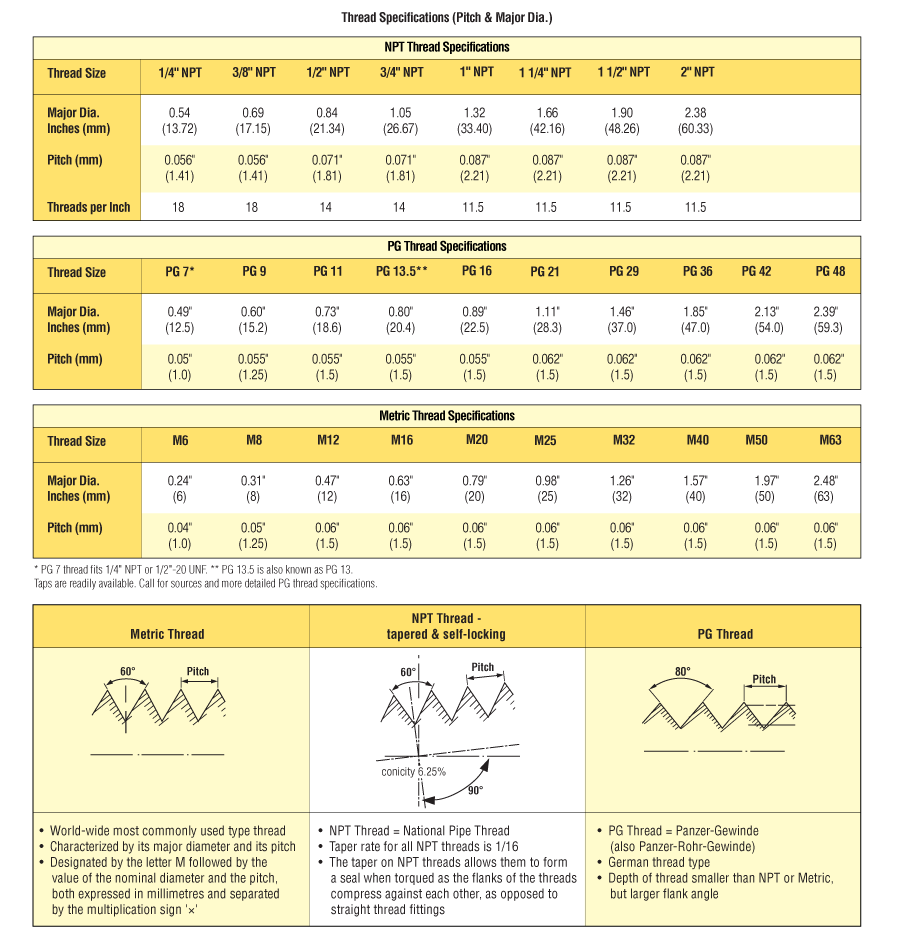More Information on Strain Reliefs – Cable Glands
Why Do I Need a Strain Relief/Cable Gland?
North American and international strain reliefs from Interpower Corporation provide a liquid-tight seal on the power cord entry and, at the same time, provide extra protection to power cords (Figure 1). Strain reliefs extend cord life and reinforce the cord connection to your equipment.
The strain reliefs described in this section are intended for use in mechanically securing a power supply cord to a piece of electrical equipment in accordance with IEC 60335 and other international standards.
Where Does a Strain Relief/Cable Gland Fit In?
All styles of Interpower strain reliefs are threaded and can be assembled in two different ways. The mounting threads of the strain relief can be threaded directly into the panel of the equipment, or the strain relief can be eased through a clearance hole in the panel and fitted with a locking nut. Obviously, each of these options require a different sized clearance hole in the equipment panel. Our specification charts and drawings for each style of strain relief found in this section should make it simple to determine the size of the hole that must be made to accommodate the strain relief selected.
NPT, Metric, and PG Thread Types Compared
Interpower strain reliefs are available in three different types of mounting threads: NPT, PG and Metric. NPT (National Pipe Thread) is the American standard. PG (Panzer Gewinde) is a European standard. PG threading is sometimes referred to as metric threading; however, these threads are not truly metric. There is a metric system of threading that is replacing PG threads.
At the opposite end of the strain relief body are Acme threads which are used to attach the dome nut and flex nut. This style of threading is designed to handle pressure under high torque conditions.
Most of the items shown in this catalog are available with either NPT or PG threads, but metric is also available. The thread system you choose will depend on the location the equipment will be used. Equipment intended for use in North America should make use of NPT strain reliefs and equipment intended for use in Europe should make use of metric threaded strain reliefs. Interpower does offer a PG to NPT adapter.
When ordering strain reliefs, consider the following factors:
1) Thread size
2) Cable range (O.D.)
3) Dome or flex style
4) Metal or nylon type
5) Color
6) Threaded or knockout (If knockout, locking or not)
7) Seal ring or O-ring
Dome Style Strain Reliefs/Cable Glands
Dome style strain reliefs, named because of their domed shape, are designed to protect the wire entering the equipment (Figure 4). They help to secure the wire connection to the equipment, and provide longer life to the cord by preventing it from rubbing against a rough or sharp edge where the cord passes through the equipment panel. Interpower dome style strain reliefs are available in Nylon 6/6 (polyamide) and nickel-plated brass. These dome style strain reliefs are also available with a multi-cable insert and can be designed to accommodate up to eight holes. This insert is used when there are two or more cables entering the equipment. We can also help custom design an insert to meet your design needs, but there must be at least 1mm distance between holes. The inserts are made of durable water-resistant elastomer.
Flex Style Strain Reliefs/Cable Glands
Flex style strain reliefs are named because they offer flexible bend protection to the cord entering the equipment. They are designed to eliminate the possibility of the power cord kinking at the point where the cord enters the equipment. The spiral shaped spring wraps around the cord and adds strength to the cord where it is most vulnerable to damage (Figure 5).
90° Angled Strain Reliefs/Cable Glands
Our 90° angled strain reliefs can be used with both a flex or dome nut. They add strength and support to the cord while adding a 90° angled snap elbow to minimize wire strain in a bending application. The snap elbow opens to 180° for easy insertion of the cable, then closes to 90°,providing added strain relief and a 10.5kg/m2 liquid tight seal (Figure 6).
When Do I Use Conduit?
Interpower Corporation also offers conduit for use with nipples or elbows. This highly flexible corrugated conduit is made of Nylon 6/6, and is flame retardant and self-extinguishing. It features excellent crush resistance, resistance to heat, UV exposure, and certain chemicals. Wires or cable are threaded through conduit in situations where the wire and cable need extra protection (from elements or physical damage) or where users may need to add additional wires at a later time.
The push-in conduit system connects flexible nylon conduit to either a straight or 90° push-in fitting. The polyamide nipples feature a ridge that snaps into the grooves of the corrugated conduit to hold the conduit in place. The conduit can be mounted turnable for non-liquid tight applications by pushing the conduit into the fitting until it stops. For rigid, liquid tight applications the conduit should be pushed farther into the fitting until it clicks again. These fittings are available in the nipple version or the 90° angled elbow version strain relief.
Assembling Strain Reliefs/Cable Glands
Strain reliefs may be installed in either clearance or threaded hole.
NOTE: Nylon strain relief fittings installed in a threaded connection and exposed to elevated temperatures should be retained with a sealing compound such as Locktite to avoid a loose connection when temperatures fluctuate.
Selecting a Strain Relief/Cable Gland for Application
The first step in specifying Interpower strain reliefs is to determine which general type will work best. For applications requiring small to medium-sized cable, we offer several varieties of strain reliefs. The aluminum strain reliefs offer the best performance for larger cable sizes.
Depending on your application, you may wish to specify a strain relief with integral flex relief. The flex relief protects the cord from stress that is applied perpendicular to the axis of its entry into the equipment.
The last step is to select the correct size strain relief for the cord with which it will be used.
After installing the cable and the strain relief, the product should be able to pass a pull test. UL calls for the most stringent pull test which consists of a 13.5 kilogram weight fixed to the cable for one minute. After the minute is over, a visual inspection is done to determine if the cable has slipped from the strain relief.






